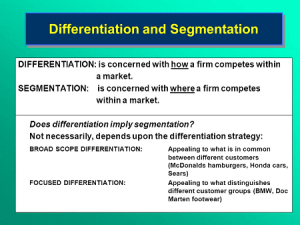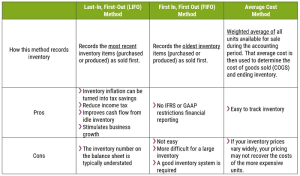Market segmentation potential-
Market segmentation is the process of dividing a broad consumer or business market into sub-groups of consumers based on some type of shared characteristics. Here are some key points to consider regarding the potential of market segmentation:
1. Enhanced Targeting
- Precision Marketing: Segmentation allows companies to target specific groups more effectively. For example, a company can create marketing campaigns tailored to the needs and preferences of a particular segment, increasing the relevance and impact of the marketing efforts.
- Personalization: Tailored messaging and product offerings can resonate more deeply with specific segments, leading to increased customer satisfaction and loyalty.
2. Increased Market Share and Profitability
- Focused Strategies: By concentrating efforts on high-potential segments, businesses can optimize their resources and maximize returns. This can lead to increased market share within those segments.
- Premium Pricing: Understanding the needs and willingness to pay of different segments can allow businesses to implement premium pricing strategies where appropriate.
3. Product Development and Innovation
- Customer Insights: Segmentation provides insights into specific customer needs and preferences, which can guide the development of new products or the improvement of existing ones.
- Customized Offerings: Companies can develop variations of their products to meet the specific needs of different segments, potentially capturing a larger overall market.
4. Improved Customer Retention
- Better Customer Experience: By addressing the specific needs of different segments, companies can improve customer satisfaction and retention rates.
- Loyalty Programs: Tailored loyalty programs can be designed to cater to the preferences of different segments, enhancing customer loyalty.
5. Competitive Advantage
- Differentiation: Effective segmentation can help a company differentiate itself from competitors by better meeting the unique needs of its target segments.
- Market Positioning: Companies can position their brands more effectively in the minds of consumers by aligning their marketing strategies with the specific attributes and benefits sought by different segments.
6. Efficient Use of Resources
- Cost-Effective Marketing: By targeting specific segments, companies can avoid wasting resources on broad marketing efforts that reach uninterested or irrelevant audiences.
- Optimized Sales Efforts: Sales teams can focus on high-potential leads and tailor their sales pitches to the specific needs of different segments.
Types of Market Segmentation
- Demographic Segmentation: Age, gender, income, education, occupation, family size, etc.
- Geographic Segmentation: Region, country, city, urban vs. rural, climate, etc.
- Psychographic Segmentation: Lifestyle, personality traits, values, opinions, interests, etc.
- Behavioral Segmentation: Purchase behavior, usage, loyalty, benefits sought, occasion, etc.
- Technographic Segmentation: Based on technology usage and preferences.
- Firmographic Segmentation (for B2B markets): Industry, company size, revenue, location, etc.
Challenges in Market Segmentation
- Data Accuracy: Ensuring that the data used for segmentation is accurate and up-to-date can be challenging.
- Market Dynamics: Segments can change over time due to market trends, economic conditions, and other factors.
- Over-Segmentation: Excessive segmentation can lead to overly complex marketing strategies and diluted brand messaging.
- Integration: Effectively integrating segmentation strategies across all aspects of marketing and sales can be difficult.
Conclusion
Market segmentation has the potential to significantly enhance a company’s marketing effectiveness, customer satisfaction, and overall profitability. By understanding and addressing the specific needs of different customer groups, businesses can develop more targeted, efficient, and impactful marketing strategies.
What is Required Market segmentation potential
“Required Market Segmentation Potential” refers to the specific attributes or characteristics that are necessary for a market segment to be considered viable or attractive for targeting by a business. This concept emphasizes the criteria or conditions that a segment must meet in order for it to be worthwhile for a company to allocate resources towards serving that segment. Here are some key factors that contribute to the required market segmentation potential:
1. Size and Growth Potential
- Market Size: The segment should be large enough to justify investment in targeting it. This typically involves assessing the number of potential customers or the revenue potential of the segment.
- Growth Rate: A segment with a growing customer base or increasing demand indicates potential for future profitability.
2. Profitability
- Revenue Potential: The segment should have the capacity to generate sufficient revenue to cover costs and provide a return on investment.
- Profit Margins: Segments with higher profit margins or willingness to pay more for products/services are often more attractive.
3. Accessibility
- Reachability: The segment should be reachable through effective marketing channels and distribution networks.
- Communication: There should be feasible methods to effectively communicate with and engage the segment.
4. Distinctiveness and Measurability
- Distinct Needs: The segment should have distinct and identifiable needs or characteristics that differentiate it from other segments.
- Measurable Characteristics: Segment characteristics should be measurable or identifiable through data and research.
5. Compatibility with Company Objectives
- Strategic Fit: The segment should align with the company’s overall strategic goals, brand positioning, and capabilities.
- Resources: The company should have the resources (financial, human, technological) to effectively serve the segment.
6. Stability and Sustainability
- Stability: The segment should exhibit stability in terms of demand patterns, buying behavior, and economic factors.
- Sustainability: Targeting the segment should be sustainable over the long term, avoiding short-lived trends or fads.
7. Competitive Environment
- Competitive Intensity: Assess the level of competition within the segment. A less competitive segment may offer greater opportunities for differentiation and profitability.
8. Risk Considerations
- Market Risks: Evaluate potential risks associated with targeting the segment, such as regulatory changes, economic downturns, or shifts in consumer preferences.
Example Application
For instance, if a company is considering entering a new market segment such as “eco-conscious consumers,” the required segmentation potential might include factors like the size of the segment (sufficient number of consumers interested in eco-friendly products), growth potential (increasing awareness and adoption of sustainability practices), profitability (willingness to pay a premium for eco-friendly products), accessibility (effective channels to reach eco-conscious consumers), and compatibility with the company’s capabilities and objectives (ability to develop and market sustainable products).
In summary, the concept of required market segmentation potential focuses on identifying and prioritizing segments that offer the greatest opportunity and fit for a company’s strategic objectives and resources. It helps businesses make informed decisions about where to allocate their marketing and operational efforts to maximize returns and achieve sustainable growth.
Who is Required Market segmentation potential
“Required Market Segmentation Potential” is not a specific person but rather a concept or a set of criteria used in marketing and business strategy.
Here’s a clarification:
- Market Segmentation: This is the process of dividing a broad consumer or business market into sub-groups of consumers (or businesses) based on some type of shared characteristics, such as demographics, psychographics, behavior, etc.
- Market Segmentation Potential: This refers to the attractiveness or viability of a particular market segment. It involves evaluating whether a segment is worth targeting based on factors like size, growth potential, profitability, accessibility, distinctiveness, compatibility with company objectives, and competitive dynamics.
There is no individual named “Required Market Segmentation Potential.” Instead, it’s a concept used by marketers and strategists to assess and prioritize which market segments to focus on based on their potential to contribute to the company’s goals and objectives.
When is Required Market segmentation potential
“Required Market Segmentation Potential” is not tied to a specific date or time. It’s a concept that is relevant whenever a company or organization is considering market segmentation as part of its marketing strategy or business planning process.
Here’s a breakdown of when “Required Market Segmentation Potential” is relevant:
- Strategic Planning: Companies typically assess market segmentation potential during strategic planning phases. This involves evaluating various market segments to determine which ones align best with the company’s goals and capabilities.
- Market Entry or Expansion: When a company is entering a new market or expanding its product/service offerings, understanding the segmentation potential helps in identifying the most promising segments to target.
- Product Development: Before developing new products or services, companies analyze market segments to uncover unmet needs or opportunities for innovation that align with customer preferences.
- Marketing Campaigns: For effective marketing campaigns, it’s essential to segment the market to tailor messages and offers that resonate with specific customer groups.
- Competitive Analysis: Assessing market segmentation potential also involves understanding the competitive landscape within each segment to determine differentiation strategies.
In essence, “Required Market Segmentation Potential” is a continuous consideration throughout various stages of business planning and execution. It helps businesses make informed decisions about where to allocate resources, how to prioritize marketing efforts, and how to position products or services effectively in the marketplace.
Where is Required Market segmentation potential

“Required Market Segmentation Potential” is not a physical location but rather a conceptual framework used within the field of marketing and business strategy. It’s used to evaluate and prioritize different market segments based on their attractiveness and suitability for a company’s products or services. Here’s how it applies in different contexts:
- Strategic Planning: It’s utilized in boardrooms and strategy meetings where executives and strategists analyze market segments to decide which ones align best with the company’s long-term objectives.
- Marketing Departments: Within marketing departments, professionals use market segmentation potential to craft targeted campaigns that resonate with specific customer segments, enhancing effectiveness and ROI.
- Market Research: Market researchers and analysts use segmentation potential to gather data on consumer behavior, preferences, and trends within different segments, helping companies make informed decisions.
- Product Development: It guides product developers in creating offerings that meet the unique needs and preferences of identified market segments, driving innovation and competitive advantage.
- Sales and Distribution: Sales teams use segmentation insights to prioritize leads and tailor their approaches to different customer groups, improving conversion rates and customer satisfaction.
- Competitive Analysis: It’s applied in competitive analysis to understand how rivals are targeting various segments and identify gaps or opportunities for differentiation.
In summary, “Required Market Segmentation Potential” is applied wherever strategic decisions are made about market focus, customer targeting, and resource allocation within organizations. It’s a strategic tool rather than a physical location.
How is Required Market segmentation potential
“Required Market Segmentation Potential” refers to the evaluation and assessment process used to determine the attractiveness and viability of different market segments for a business. Here’s how this evaluation is typically conducted:
1. Identifying Segmentation Criteria
- Demographic Factors: This includes age, gender, income, education, occupation, family size, etc.
- Psychographic Factors: Lifestyle, personality traits, values, opinions, interests, etc.
- Behavioral Factors: Purchase behavior, usage patterns, loyalty, benefits sought, etc.
- Geographic Factors: Region, country, urban vs. rural, climate, etc.
- Technographic Factors: Technology usage, preferences, etc. (especially relevant in B2B markets).
2. Segmentation Analysis
- Market Size: Evaluate the number of potential customers within each segment. Larger segments may indicate greater market opportunity.
- Growth Rate: Assess how quickly each segment is growing. Faster-growing segments may offer more potential for future revenue and profitability.
- Profitability: Analyze the revenue potential and profit margins associated with each segment. Some segments may be willing to pay more for specific products or services.
- Accessibility: Consider how easily each segment can be reached and served through existing distribution channels, marketing efforts, and sales networks.
- Distinctiveness: Identify the unique needs, preferences, and behaviors that distinguish each segment from others. Segments with distinct characteristics may be easier to target effectively.
- Compatibility: Evaluate how well each segment aligns with the company’s capabilities, resources, and strategic objectives. Focus on segments that are a good fit with the company’s strengths and market position.
3. Prioritization and Selection
- Segment Prioritization: Rank segments based on their attractiveness and alignment with the company’s strategic goals. Focus on segments that offer the greatest potential for growth, profitability, and competitive advantage.
- Targeting Strategy: Develop tailored marketing strategies, product offerings, and communication approaches for each prioritized segment. Customize messages and promotions to resonate with the specific needs and preferences of each segment.
- Resource Allocation: Allocate resources (financial, human, technological) effectively to target and serve prioritized segments. Optimize marketing budgets and sales efforts to maximize ROI from selected segments.
4. Implementation and Monitoring
- Implementation: Execute marketing campaigns, product launches, and sales initiatives targeted at selected segments. Monitor performance metrics such as sales growth, customer acquisition, and market share within each segment.
- Feedback and Adjustment: Continuously gather feedback from customers within each segment and adjust strategies as needed. Adapt to changes in market dynamics, consumer preferences, and competitive landscape to maintain relevance and effectiveness.
Example Application
For example, a technology company might analyze market segments based on demographic factors (age, income), psychographic factors (technology adoption, lifestyle), and behavioral factors (purchase behavior, usage patterns). After evaluating these segments, they might prioritize segments with high growth rates, strong profitability potential, and compatibility with their technology solutions. They would then develop targeted marketing campaigns and sales strategies tailored to each prioritized segment to maximize market penetration and revenue growth.
In essence, “Required Market Segmentation Potential” involves a structured approach to identifying, evaluating, and prioritizing market segments to optimize resource allocation, enhance customer targeting, and drive business growth. It’s a critical process in strategic marketing and business planning to ensure effective market segmentation and targeting.
Case Study on Market segmentation potential
Tech Company Expanding into Wearable Fitness Devices
Background: XYZ Tech is a leading technology company known for its innovative gadgets and consumer electronics. Recently, they’ve decided to enter the wearable fitness device market, aiming to capitalize on the growing trend of health and wellness tracking.
Objective: XYZ Tech wants to identify and evaluate market segments within the wearable fitness device market to prioritize their marketing efforts and product development strategies.
Steps Taken:
1. Segmentation Criteria Identification:
XYZ Tech considers various segmentation criteria to categorize potential customers for their wearable fitness devices:
- Demographic: Age (young adults, middle-aged), income levels (affluent vs. budget-conscious), occupation (fitness professionals vs. general consumers).
- Psychographic: Lifestyle (active vs. sedentary), health consciousness (health enthusiasts vs. casual users), attitudes towards technology (early adopters vs. cautious adopters).
- Behavioral: Usage patterns (daily users vs. occasional users), purchase behavior (price-sensitive vs. brand loyal), benefits sought (basic fitness tracking vs. advanced health monitoring).
2. Segmentation Analysis:
- Market Size and Growth Potential: XYZ Tech conducts market research to estimate the size of each segment and its growth rate. They find that the segment of young adults interested in advanced health monitoring is rapidly growing due to increasing health awareness and adoption of fitness technology.
- Profitability: They analyze profitability by assessing the willingness of each segment to pay for features such as heart rate monitoring, sleep tracking, and GPS capabilities. The affluent segment shows a higher willingness to pay for premium features.
- Accessibility: XYZ Tech evaluates how accessible each segment is through their existing distribution channels and marketing strategies. They find that health enthusiasts are easily reachable through online platforms and health-related events.
- Distinctiveness: They identify that fitness professionals have distinct needs for accurate performance metrics and training insights compared to general consumers who seek ease of use and affordability.
- Compatibility: XYZ Tech assesses which segments align with their technological capabilities and brand positioning. They decide to focus on segments that value innovation, design, and reliability, which aligns with their strengths.
3. Segment Prioritization and Selection:
- Targeting Strategy: Based on their analysis, XYZ Tech decides to prioritize two main segments: young adults interested in advanced health monitoring and fitness professionals seeking performance insights.
- Customized Offerings: They develop two distinct product lines: a sleek, feature-rich smartwatch targeting young adults with customizable health metrics, and a robust fitness tracker with detailed performance analytics tailored for fitness professionals.
4. Implementation and Monitoring:
- Marketing Campaigns: XYZ Tech launches targeted marketing campaigns on digital platforms emphasizing the unique benefits of their products for each segment. They use influencers and partnerships with fitness brands to enhance visibility.
- Sales and Distribution: They optimize their distribution channels to ensure availability in retail stores frequented by health enthusiasts and through direct sales channels online for tech-savvy consumers.
- Feedback and Adjustment: Throughout the product lifecycle, XYZ Tech gathers feedback from customers in each segment to refine features, improve user experience, and adapt marketing strategies based on market response and competition.
Results:
- Market Penetration: XYZ Tech successfully penetrates the wearable fitness device market, capturing significant market share within their targeted segments.
- Revenue Growth: Sales from their specialized product lines exceed expectations, driven by targeted marketing efforts and product differentiation.
- Brand Loyalty: By meeting the specific needs of each segment, XYZ Tech enhances customer satisfaction and loyalty, establishing a strong foothold in the competitive wearable technology market.
Conclusion:
This case study illustrates how a company like XYZ Tech can leverage market segmentation potential to effectively enter and succeed in a new market segment. By carefully analyzing and prioritizing segments based on criteria such as demographic, psychographic, behavioral, and compatibility factors, XYZ Tech can tailor its strategies to meet the distinct needs of each segment, maximizing market opportunity and competitive advantage. Market segmentation potential thus plays a crucial role in guiding strategic decision-making, product development, and marketing initiatives for businesses aiming to expand into new markets or enhance their existing market presence.
White paper on Market segmentation potential
Below is an outline for a white paper on “Market Segmentation Potential,” focusing on its importance, methods, and strategic implications for businesses:
Title: Understanding Market Segmentation Potential: Unleashing Strategic Opportunities
Abstract: Market segmentation is a critical tool for businesses seeking to maximize their market penetration and profitability. This white paper explores the concept of market segmentation potential, highlighting its significance in strategic decision-making, product development, and marketing strategies. It provides insights into the methods and criteria used to assess market segments, along with practical examples and strategic implications for businesses.
1. Introduction
- Definition of Market Segmentation
- Importance of Market Segmentation Potential
- Overview of the White Paper Structure
2. Understanding Market Segmentation Potential
- Definition and Scope of Market Segmentation Potential
- Significance in Strategic Decision-Making
- Benefits of Effective Market Segmentation Potential Analysis
3. Methods for Assessing Market Segmentation Potential
- Segmentation Criteria:
- Demographic
- Psychographic
- Behavioral
- Geographic
- Technographic (B2B markets)
- Segmentation Analysis:
- Market Size and Growth Potential
- Profitability
- Accessibility
- Distinctiveness
- Compatibility with Company Objectives
4. Strategic Implications of Market Segmentation Potential
- Targeting High-Potential Segments
- Customizing Marketing Strategies
- Enhancing Product Development
- Improving Customer Engagement and Loyalty
5. Case Studies and Examples
- Example 1: Consumer Goods Company Expanding into Emerging Markets
- Example 2: Tech Start-up Targeting Niche Technographic Segments
- Example 3: Healthcare Provider Tailoring Services to Demographic Segments
6. Challenges and Considerations
- Data Accuracy and Availability
- Market Dynamics and Trends
- Integration with Overall Business Strategy
7. Best Practices for Leveraging Market Segmentation Potential
- Continuous Monitoring and Evaluation
- Agile Response to Market Changes
- Cross-Functional Collaboration
8. Conclusion
- Recap of Key Points
- Future Trends in Market Segmentation Potential
- Closing Remarks
Appendix:
- Glossary of Terms
- References and Further Reading
This outline provides a structured approach to exploring the concept of market segmentation potential in depth. Each section can be expanded with detailed analysis, case studies, and practical examples to provide valuable insights and actionable strategies for businesses aiming to optimize their market segmentation efforts.
Industrial Application of Market segmentation potential
In industrial contexts, the application of market segmentation potential plays a crucial role in guiding strategic decisions, optimizing resource allocation, and enhancing market competitiveness. Let’s explore how market segmentation potential can be applied in an industrial setting:
1. Identifying Market Segments:
Industrial companies often serve diverse customer bases with varying needs and preferences. Market segmentation potential helps in identifying and categorizing these customer segments based on factors such as:
- Industry Verticals: Segmentation by industry sectors (e.g., automotive, aerospace, healthcare) based on specific needs and regulatory requirements.
- Company Size: Segmentation by company size (e.g., small and medium-sized enterprises vs. large corporations) with different procurement processes and budget constraints.
- Geographic Factors: Segmentation by geographical regions, considering local regulations, infrastructure, and market maturity.
2. Assessing Segment Potential:
Once segments are identified, industrial companies assess their potential based on several criteria:
- Market Size and Growth: Evaluate the size of each segment and its growth potential over time. This helps prioritize segments with substantial revenue opportunities.
- Profitability: Analyze the profitability of serving each segment considering factors such as pricing dynamics, volume potential, and cost-to-serve.
- Technical Requirements: Understand the specific technical requirements and challenges of each segment to tailor product offerings and service solutions effectively.
3. Strategic Targeting and Positioning:
Armed with insights from segmentation analysis, industrial companies can:
- Develop Tailored Products and Solutions: Customize products or services to meet the distinct needs of different segments. For example, offering specialized materials or components for high-tech industries versus standard solutions for general manufacturing.
- Positioning Strategies: Position their brand and offerings uniquely within each segment to differentiate from competitors. This could involve emphasizing reliability, innovation, cost-effectiveness, or sustainability, depending on segment priorities.
4. Marketing and Sales Strategies:
- Segment-Specific Marketing Campaigns: Develop targeted marketing messages and campaigns that resonate with the priorities and pain points of each segment. This could involve industry-specific trade shows, digital marketing strategies, and content marketing tailored to technical or operational concerns.
- Sales Approach: Customize sales strategies and approaches based on the buying behavior and decision-making processes within each segment. This might include direct sales efforts for large enterprises versus channel partnerships for smaller businesses.
5. Customer Relationship Management:
- Enhanced Customer Service: Provide differentiated customer service and support based on the needs of each segment. For example, offering proactive maintenance services for industries with high uptime requirements.
- Customer Retention Programs: Develop loyalty programs and initiatives that reward long-term partnerships and repeat business within key segments.
6. Continuous Evaluation and Adaptation:
- Market Monitoring: Continuously monitor market trends, customer feedback, and competitive dynamics within each segment to adapt strategies accordingly.
- Agile Response: Be prepared to adjust product offerings, pricing strategies, or marketing tactics based on evolving market conditions and customer needs.
Example Application:
An industrial automation company might use market segmentation potential to identify segments such as automotive manufacturers requiring high-precision robotics, pharmaceutical companies needing sterile manufacturing solutions, and food processing plants seeking automation for efficiency. By prioritizing segments with high growth potential, profitability, and alignment with their technological capabilities, the company can tailor its offerings and strategies to capture significant market share and foster long-term customer relationships.
In conclusion, industrial application of market segmentation potential enables companies to effectively navigate complex markets, optimize resource allocation, and capitalize on growth opportunities by aligning their offerings with the specific needs and preferences of diverse customer segments.





